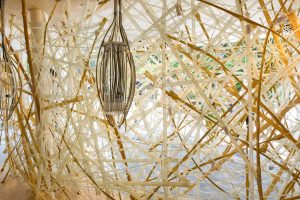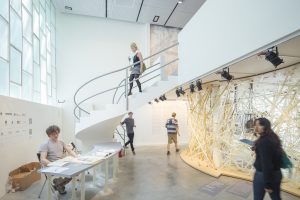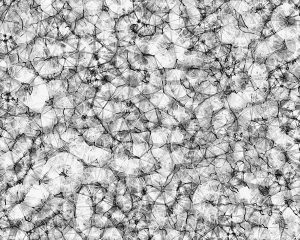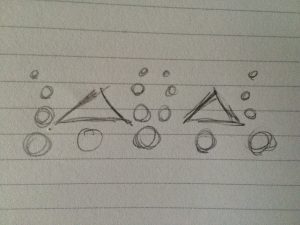
LifeOject, an architectural project curated by Dr. Ido Bachelet, Bnaya Bauer, Arielle Blonder, Dr. Yael Eylat Van Essen, and Noy Lazarovich, is a sculptural installation exploring new spatial attitude through deriving its form from characteristics of a bird’s nest. As I was searching through ArchDaily, I was fasinated by the idea of the project of creating a “dialogue between architecture and biology.” The project experiments on integrating biological properties such as resilient quality of a bird’s nest to its materials. Through the use of natural materials and its resilient quality, it is structured to an open-ended form that is held by bending forces between floor and ceiling. In this project, computational process becomes dominant over composition and in that process, the use of randomness is key. To achieve natural, biological characteristics, random arrangement of branches was essential. Although some values had to be preset, a code was designed to assemble and knit the materials together. Because architecture is viewed with a sense of perfection through implied idea of “safety,” randomness seemed to be impossible; however, through experimentation of new materials and implementation of computational design, the artists manifested a dynamic form through introducing new materials that promised integration of open-ended fabrication to architectural practice.

![[OLD – FALL 2016] 15-104 • COMPUTING for CREATIVE PRACTICE](../../../../wp-content/uploads/2020/08/stop-banner.png)



